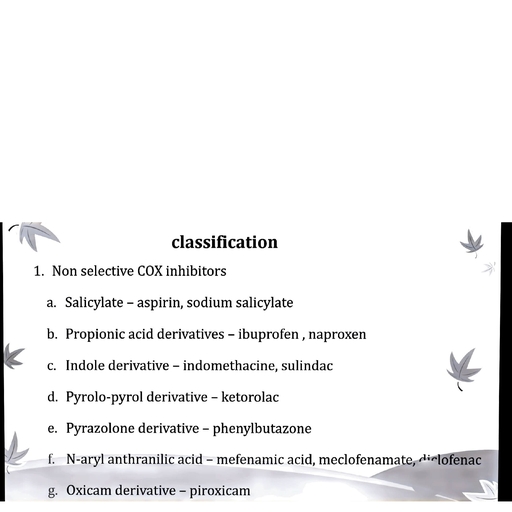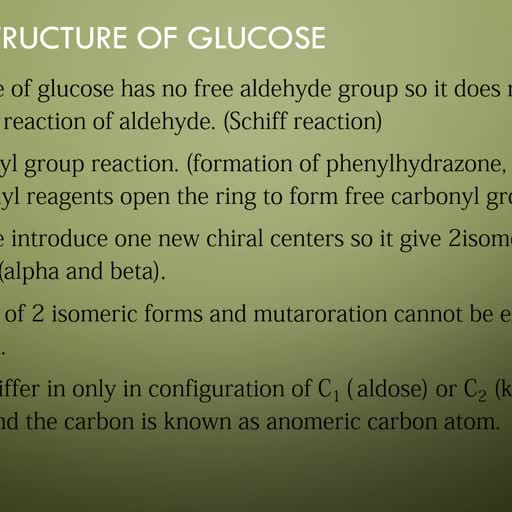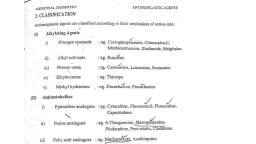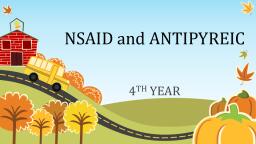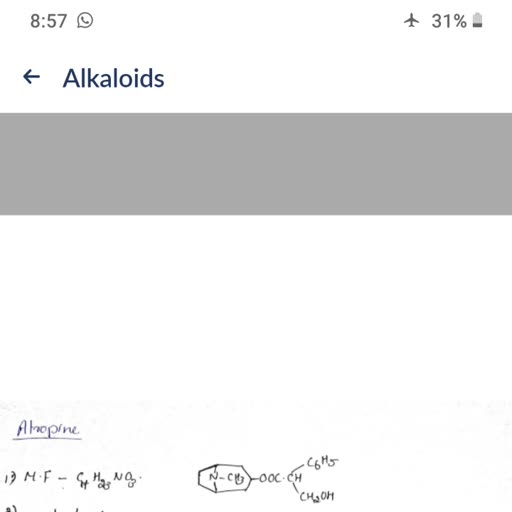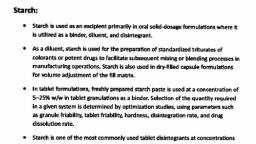Page 2 :
DRUGS, ACTING ON, CENTRAL, NERVOUS, SYSTEM, NARCOTIC AND NON – NARCOTIC, ANALGESIC
Page 3 :
Introduction, – Analgesics are agents that relieve pain by acting centrally to, elevate pain threshold without disturbing consciousness or, altering other sensory modalities, – Analgesics are classified into two major categories:, – 1. Opioid analgesics or narcotic analgesics ( centrally acting)., – 2. Nonopioid analgesics ( peripherally acting).
Page 4 :
• Narcotic analgesic agents cause sleep in conjunction with, their analgesic effect., •, , If a narcotic is used for a long time, it may become habitforming and physical dependence may lead to withdrawal, side effects., , • Opioid drugs are not only used as analgesics, but also, possess numerous other useful properties., • For example, morphine is used to induce sleep in the, , presence of pain, diarrhoea, suppress cough, and facilitate, anaesthesia.
Page 15 :
µ receptors, , • Morphine binds to receptor and induces a change in shape and open up ion, , channel in the cell memmbrane., • Thus K+ ion can flow out of cell, hyperpolarise memebrane potential., , • This result in decrease in neurone excitability.
Page 16 :
• The increase in permeability decrease the influx of calcium into, the nerve terminal and this reduce neurotransmitter release., • both the effects shut down the nerve and block pain messages., • These receptors produces analgesia, respiratory depression,, euphoria and addiction.
Page 17 :
K receptors, , • This receptor directely associated with calcium channel. When agonist bind, to the receptor, receptor confirmation and calcium channel is closed., • Thus it block the pain messages., • These receptor produces dysphoria , euphoria and addiction
Page 18 :
δ receptors, , • It is a G- protein linked receptor., • When an agonist binds, the receptor changes its shape and, , triggers a messenger protein (G protein)., • Which prevent the formation of cyclic adenosine, monophosphate, (which is second messager in transmission of, pain signal) by preventing the synthesis od cyclic AMP.
Page 21 :
Morphine and its analogue, mechanism, – It activate mu-receptors, – Codeine is the methyl morphine .it convert to morphine after, , metabolism.it has low affinity to mu-receptors, – Meperidine also interact with Na channel (local, anaesthesia). Weak serotonin reuptake inhibitor., – Diphenoxylate is a derivatives of meperidine.
Page 23 :
Narcotic antagonist, mechanism and uses, – Nalorphine -- Competitive antagonist mureceptors and agonist to k receptors, , – Naloxone– high affinity to mu-receptors than k, receptors, – These are used for antidote for morphine overdose.
Page 24 :
SAR, • It have 4 ring --- A, B, C, D, E, It contains 5 chiral centers, , • Active form of morphine is, levorotatory,, , • conformation of morphine is T, shape.
Page 25 :
• Morphinans --- removing E ring of morphine,, loss of 4,5-epoxide and 7.8 – double bond – increased, binding affinity at all opoid receptors, • Benzomorphans --- removing C ring of morphine, • 7,8-dihydro-6-keto c ring increase binding to receptors
Page 26 :
1.Phenolic OH, , • By methylation – reduce or no analgesic action, • Ethylation – less effective, • Acetylation – highly active and produce addition, 2.Alcoholic OH, • Modification produce more active, • Oxidation of OH decreases potency
Page 27 :
• 3,6- diacetylated form 2 to 3 time more potent than, morphine, 3. Modification of double bond at 7, 8, • not essential for analgesic action ., • It can be removed to give compounds with reduced, duration of action and increased activity.
Page 29 :
• N-alkene, N- cycloalkyl methyl group produce antagonist, activity, • 4-ethyl ester optimal for activity, Deceased or increased chain length reduces activity, • 4-piperidine carbon substitution with CH2OCH3,, COOCH3 – increase potency
